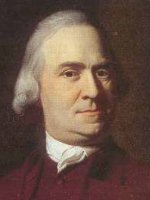What the Americans Found on the Nancy
Yesterday I described the capture of the British brig Nancy by a New England privateer in late November 1775. When the Americans discovered the weapons on that ship, “jubilant” is not too strong a word for their reaction. Gen. William Heath wrote in his diary on 30 Nov 1775:
Intelligence was received from Cape Ann, that a vessel from England, laden with warlike stores, had been taken and brought into that place. There was on board one 13 inch brass mortar, 2000 stand of arms, 100,000 flints, 32 tons of leaden ball, &c. &c. A fortunate capture for the Americans!Those weapons were soon moved to Cambridge, and Col. Stephen Moylan wrote:
Such universal joy ran through the whole camp as if each grasped victory in his hand; to crown the glorious scene, there intervened one truly ridiculous, which was Old Put [Gen. Israel Putnam] mounted on the large mortar, which was fixed in its bed for the occasion, with a bottle of rum in his hand, standing parson to christen, while god-father Mifflin gave it the name of Congress.Thomas Mifflin (shown above, courtesy of the U.S. Army Transportation Museum) was then Quartermaster-General of the Continental Army. In June 1776, he would be succeeded by none other than Col. Moylan.
Dr. James Thacher, an army surgeon, later explained the reason for such excitement:
Before our privateers had fortunately captured some prizes with cannon and other ordnance, our army before Boston had, I believe, only four small brass cannon, and a few old honey-comb iron pieces, with their trunnions broken off. . . . Had the enemy been made acquainted with our situation, the consequences might have been exceedingly distressing.By the day after Heath heard about the Nancy, news of the capture had filtered into Boston, where selectman Timothy Newell recorded:
A large Brigt. with ordnance stores, a very valuable prize from London taken by Captn. [John] Manly in a Schooner Privateer from Beverly.Lt. William Feilding wrote to his relative and patron, the 6th Earl of Denbigh, on 12 Dec 1775:
In my last I informed your Lordship the apprehension we were in for fear of the Ordnance Brigg was taken and am sorry to Acquaint your Lordship that by Accounts from the Rebels, she was Taken a few days before the Boyne sail’d. . . .On 19 Jan 1776, Feilding added that British officers expected the Americans to mount their new mortars on high ground at Phipps’ Farm, across the Charles River from Boston, “and endeavour to Burn the Town.”
The Captain [of a privateer captured in the first week of December] says he saw the sea Morter (which was on Board the Ordnance Brigg) at Cambridge Common the Thursday before he was taken; and that from the Information of the Master, he was sent out to sea for a Powder Ship, which we have heard nothing of as yet. A deserter who came in a few days since, Says he saw all the Ordnance Stores safe Lodg’d at Cambridge last week.



















